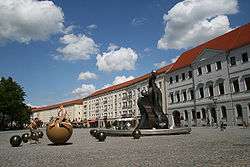Dessau
| Dessau | ||
|---|---|---|
| Stadtteil of Dessau-Roßlau | ||
|
Market square with fountain | ||
| ||
 Dessau | ||
| Coordinates: 51°50′N 12°15′E / 51.833°N 12.250°ECoordinates: 51°50′N 12°15′E / 51.833°N 12.250°E | ||
| Country | Germany | |
| State | Saxony-Anhalt | |
| District | Urban districts of Germany | |
| Town | Dessau-Roßlau | |
| Area | ||
| • Total | 182.81 km2 (70.58 sq mi) | |
| Population (2006-12-31) | ||
| • Total | 77,394 | |
| • Density | 420/km2 (1,100/sq mi) | |
| Time zone | CET/CEST (UTC+1/+2) | |
| Postal codes | 06811-06849 | |
| Dialling codes | 0340 | |
| Vehicle registration | DE | |
| Website | www.dessau.de | |
Dessau is a city in Germany on the junction of the rivers Mulde and Elbe, in the Bundesland (Federal State) of Saxony-Anhalt. Since 1 July 2007, it is part of the new city of Dessau-Roßlau. Population of Dessau proper: 77,973 (June 2006).
Geography
Dessau is situated on a floodplain where the Mulde flows into the Elbe. This causes yearly floods. The worst flood took place in the year 2002, when the Waldersee district was nearly completely flooded. The south of Dessau touches a well-wooded area called Mosigkauer Heide. The highest elevation is a 110m high former rubbish dump called Scherbelberg in the southwest of Dessau. Dessau is surrounded by numerous parks and palaces that ranks Dessau as one of the greenest towns in Germany.
History
Dessau was first mentioned in 1213. It became an important centre in 1570, when the Principality of Anhalt was founded. Dessau became the capital of this state within the Holy Roman Empire. Anhalt was dissolved In 1603 it was split into four – later five – Anhalts, Dessau becoming the capital of the mini-state of Anhalt-Dessau in 1918. In 1863 two of the noble line died out, and became reunited.
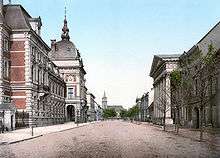
Dessau is famous for its college of architecture Bauhaus. It moved here in 1925 after it had been forced to close in Weimar. Many famous artists were lecturers in Dessau in the following years, among them Walter Gropius, Paul Klee and Wassily Kandinsky. The Nazis forced the closure of the Bauhaus in 1931, and it was not reopened until 1986.
The city was almost completely destroyed by Allied air raids in World War II on March 7, 1945, six weeks before American troops occupied the town. Afterwards it was rebuilt with typical GDR concrete slab architecture (Plattenbau) and became a major industrial centre of East Germany. Since German reunification in 1990 many historic buildings have been restored.
The composer Kurt Weill was born in Dessau. Since 1993 the city has hosted an annual Kurt Weill Festival. Dessau was also the birthplace of the philosopher Moses Mendelssohn (in 1729), and Leopold I, Prince of Anhalt-Dessau (der alte Dessauer) (on 3 July 1676), a lauded field marshal for the Kingdom of Prussia.
Since January 7, 2005, Dessau has gained notoriety for the mysterious death of Sierra Leonean convicted drug trafficker and failed asylum seeker Oury Jalloh in his cell at a Dessau police station. According to local police, Jalloh, who was drunk and had been tied to his bed because he was volatile and violent, set his own mattress on fire, causing his own death as he burned alive. A number of contradictions and inconsistencies as well as the disappearance of key evidence such as video tapes have led to allegations that the police and maybe even the local court may have been involved in Jalloh's death and subsequent cover-up efforts. A local court acquitted officers in 2008. In 2010, however, a higher federal court declared the ruling null and void, and ordered a new investigation and trial be launched.
Sights
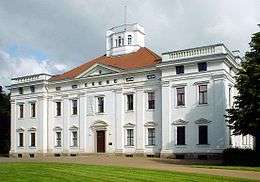
Castles and gardens
- Dessau-Wörlitzer Gartenreich with Landscape Garden Groß Kühnau, Oranienbaum, Sieglitzer Berg, Leiner Berg, Wörlitzer Park and numerous Monuments like the Drehberg (recorded in the UNESCO World Heritage)
- Middle Elbe Biosphere Reserve (protected by UNESCO)
- Zoo at Mausoleumspark
- Wallwitzburg
- Rondell
- remains of the City Castle (Johannbau)
- Georgium Palace and Park
- Kühnau Palace and Park
- Mosigkau Palace and Park
- Luisium Palace and Park
The Bauhaus
There are several examples of Bauhaus architecture in Dessau, some of them included in the UNESCO World Heritage. The Bauhaus College itself was constructed based on designs by Walter Adolph Georg Gropius.
- Bauhaus Dessau Museum, with audiovisual guidance
- Masters' Houses
- Feininger House (Kurt Weill Centre)
- Muche-Schlemmer House
- Klee-Kandinsky House
- Gropius House (destroyed), now used for ticket sales, as a café and as a book-shop
- Dessau-Törten Estate with co-op Building and House of Steel, Laubenganghouses and Fieger House
- Grain House, constructed by Carl Fieger in 1930 as a restaurant, still in operation
- Employment Office

Churches
- St. Mary's Church
- St. John's Church
- Georgenkirche
- Petruskirche
- Auferstehungskirche
- Pauluskirche
- Christuskirche
- Propsteikirche St. Peter and Paul
- Dreieinigkeit
- St. Josef
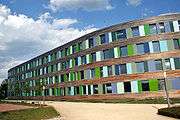
Other sights
- Townhall, built in 1901
- The Palaces of Waldersee and Dietrich, today they are used as libraries
- General Post Office
- New Water Tower
- Umweltbundesamt (formerly Wörlitzer Bahnhof)
- Footbridge crossing the river Mulde
Culture
Theatres and museums

- Anhalt Theatre [1] including Gregor Seyffert & Compagnie [2]
- City History Museum
- Anhalt Art Gallery at Georgium Palace with Park
- Mosigkau Palace Museum
- Luisium Castle Museum with Park
- Oranienbaum Palace Museum with Park
- Museum of Natural- and Prehistory
- Moses Mendelssohn - Zentre
- Hugo Junkers Technical Museum
- UCI Cinema Complex
- Kiez-Cinema (one of the smallest Cinemas in Germany) [3]
Regional media
- Mitteldeutsche Zeitung (daily newspaper, Monday-Saturday)
- Wochenspiegel (free newspaper on Wednesday) and Supersonntag (free newspaper on Sunday)
- REGJO (quarterly Economy Journal for the Region of Leipzig/Halle)
- leo[4] (monthly, regional Event- and Culture Magazine)
- local Studios of the MDR and SAW (Radiostations)
- local TV Stations: RAN 1 and Offener Kanal Dessau
Transport
Public transport
The Dessau tramway network has three lines and is supplemented by numerous bus lines. Dessau's public transport is operated by Dessauer Verkehrsgesellschaft (DVG), which transports around 6 million people each year.

Railway stations
Dessau Hauptbahnhof (main station) has connections to Magdeburg, Berlin, Leipzig, Halle, Bitterfeld and Lutherstadt Wittenberg. The line from Berlin was opened on 1 September 1840. The Dessau-Bitterfeld line (opened on 17 August 1857) was electrified in 1911, the first fully electrified long-distance railway in Germany. Dessau was part of the InterCity long distance network until the year 2002. Regional trains also stop at the stations Dessau-Süd, Dessau-Alten, Dessau-Mosigkau and Rodleben. The Dessau-Wörlitzer-Eisenbahn (railway) connects Dessau to Wörlitz, a town situated 15 km to the east, and the Wörlitzer Park. Starting point of this railway is the main station. This train also stops at the stations Dessau-Waldersee and Dessau-Adria.
Roads
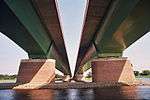
In 1938 the autobahn A9 (Munich-Berlin) was built southeast of the town area. The two exits to Dessau on the A9 are called "Dessau-Ost" and "Dessau-Süd". Dessau is also crossed by the "Bundesstrassen" (federal roads) B 184 and B 185.
The airfield
The airfield of Dessau is situated northwest of the town between the districts Kleinkühnau, Alten and Siedlung. A destination with a charter airplane is possible. The runway has a length of 1000m. The Hugo Junkers Technical Museum is situated in the neighbourhood (directly east) of the airfield, which has the eastern end of the modern runway almost directly abutting the historical World War II Junkers factory airstrip's western end.
Water
Today the “Leopoldshafen” (harbour) is used for the annual international motorboat racings. The “Wallwitzhafen” is used as a private sportboat harbour and the “Elbehafen” near the Grain House is used for cruisers. The next harbour for goods is situated in Rosslau.
Bikes
Dessau, with its flat landscape in the Saxon Lowland is very appropriate for biking. The bike roads have a length of about 146 km and lead to all the parks and sights.
Sports
Sports like soccer, cycling, handball, volleyball, gymnastics, table tennis and tennis have a long tradition and are very popular in Dessau. The former soccer team "SG Waggonbau Dessau" won the GDR soccer cup in 1949. The handball team played in the GDR "Oberliga" and since 1990 they are playing in the 1st and 2nd "Bundesliga". Currently, Dessau has around 80 sport clubs with over 13,500 members. Next to the traditional sports, Dessau has active sport clubs in the following disciplines: aikido, badminton, basketball, canoeing, chess, climbing, cycling, dancing, fishing, horse riding, karate, judo, jiu-jitsu, motorboat, rowing, speedskating, sailing, skittles, skydiving, squash, swimming, table tennis, water polo, wrestling and a few more.
Facilities
- Numerous Sports Fields (more than 10)
- Skittle Alleys (6)
- Tennis Courts (3)
- Boathouses (3)
- Indoor Swimming Pools (2)
- Paul-Greifzu-Stadion (for 22.000 viewers)
- Speedskating Course
- Climbing Tower Zuckerturm
- Anhalt Arena Dessau (for 3.600 viewers)
- Airfield Dessau
- Rifle Range
Politics
The borough of Dessau is mentioned first in 1372. The Head of the Town called "Schultheiss" was constituted by the Earl. Together with a few assessors the "Schultheiss" formed the Town Council. As of 1372 the Town Council was divided in 2 agencies. As of 1600 in three agencies and as of 1785 again in two agencies. The "Schultheiss" of Dessau changed nearly every year until the Town Council Constitution was cancelled in 1832. Afterwards Dessau became a Town Council and a Town Delegation Constitution. Since 1852 the Head of the Town is called Mayor. During the National Socialist period the Mayor was constituted by the party (NSDAP). After World War II the Soviets formed an Executive Council with a Mayor. The Town Council Constitution was elected by the people. Since the German reunification this committee is elected free. And since 1994 it's called "Stadtrat" (Town Council). The Mayor is directly elected by the people since 1994.
The Town Council (Stadtrat)
Consists of the following parties: (Local Elections from April 22, 2007) [5]
- Lord Mayor: 1 Seat
- CDU: 13 Seats
- Die Linke: 10 Seats
- SPD: 8 Seats
- FDP: 4 Seats
- Bündnis 90/Die Grünen: 2 Seats
- Bürgerliste: 3 Seats
- Freie Wähler: 1 Seats
- DVU: 1 Seat
- Neues Forum: 3 Seats
- WG Pro Dessau-Rosslau: 5 Seats
Sister Cities
 Argenteuil, France, since 1959 [6]
Argenteuil, France, since 1959 [6] Klagenfurt, Austria, since 1971
Klagenfurt, Austria, since 1971 Ludwigshafen, Rhineland-Palatinate, since 1988
Ludwigshafen, Rhineland-Palatinate, since 1988 Gliwice, Poland, since 1992
Gliwice, Poland, since 1992 Ibbenbüren, North Rhine-Westphalia
Ibbenbüren, North Rhine-Westphalia Roudnice nad Labem, Czech Republic
Roudnice nad Labem, Czech Republic
Education
- Anhalt University of Applied Sciences (Architecture, Facility Management, Design and Geoinformatics) [7]
- Learning Centre from the German Chamber of Industry and Commerce (Halle/ Dessau)
- Anhalt Vocational School Centre Hugo Junkers I, II and III (Chapon-School)
- Grammar School "Walter Gropius"
- Grammar School "Liborius"
- Grammar School "Philantropinum"
European subsidies
Dessau is part of the EU-URBAN programme. This programme is based on the integrated approach that is used for tackling the environmental, economical and social problems, affecting the deprived urban areas. There are several projects in Dessau sponsored via this subsidy.
Notable People
- August Klughardt, (1847-1902), composer and conductor
- Thomas Kretschmann, (born 1962), Hollywood actor
- Dieter Hallervorden, (born1935), famous comedian, cabaret artist and singer, honorary citizen of Dessau
- Hugo Junkers, (1859-1935), German engineer and airplane designer, constructed first airplane totally made from metal, the Junkers J 1 in 1915 - founded the Junkers & Co-airplane-factory
- Johannes Winkler, (1897-1947), launched the first liquid-fuelled rocket in Europe at Dessau airfield
- Pedigrees of Dessauer, such as Josef Dessauer (1798-1876)
- Leopold I, Prince of Anhalt-Dessau (1767-1747), ruler of the principality of Anhalt-Dessau from 1693 to 1747.
- Heinrich Schwabe, (1798-1875), astronomer remembered for his work on sunspots
- Moses Mendelssohn, (1729-1786), German Jewish philosopher, father of Haskalah
- Wilhelm Müller, (1794-1827), famous for the Lieder of Franz Schubert
- Julius Schubring, (1839-1914), classical scholar
- Herbert Tobias, (1924-1982), photographer
- Kurt Weill, (1900-1950), composer, worked together with Bertolt Brecht
More notable people
Born in Dessau before 1900
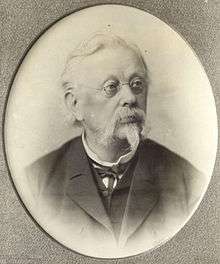

- George III, Prince of Anhalt-Dessau (1507-1553), prince
- Bernhard VII, Prince of Anhalt-Zerbst (1540-1570), prince
- John Casimir, Prince of Anhalt-Dessau (1596-1660), prince
- Heinrich Schwabe (1789-1875), astronomer and botanist
- Friedrich von Olivier (1791-1859), painter of Romanticism
- Ludwig Philippson (1811-1889), writer and rabbi, founder of Allgemeine Zeitung des Judentums
- Wilhelm Rust (1822-1892), composer, musicologist, Bach researcher and choirmaster
- Max Müller (1823-1900), linguist and one of the founders of the Sanskrit - Research
- Friedrich Grützmacher (1832-1903), cellist and composer
- Princess Adelheid-Marie of Anhalt-Dessau (1833-1916), Duchess of Nassau and Grand Duchess of Luxembourg
- Henriette Johanne Marie Müller (1841-1916), Hamburg Original
- Wilhelm Schröter (1849-1904), landscape painter
- Gustav Lindau (1866-1923), mycologist and botanist
After 1900, born in Dessau
- Gerhard Nebel (1903-1974), writer, essayist and cultural critic
- Hans von Ohain (1911-1998), physicist, father of the jet engine
- Ursula Herking (1912-1974), actress and cabaret artist
- Gerhard Stolze (1926-1979), tenor
- Karl-Heinz Kämmerling (1930-2012), professor of piano
- Gernot Böhme (born 1937), philosopher
- Ameli Koloska (1944), athlete and Olympian
- Emil Schult (born 1946), painter, poet and musician
- Thomas Kretschmann (born 1962), actor
- Annette Schlünz (born 1964), composer
- Danny Fuchs (born 1976), football player Bundesliga
Gallery
 Dessau and Mulde river
Dessau and Mulde river- Hunting bridge over the Mulde (b. 1993)
 Junkers-works in Dessau and portrait of its founder
Junkers-works in Dessau and portrait of its founder Anhaltisches Theater
Anhaltisches Theater Side view of the Rathaus Dessau
Side view of the Rathaus Dessau
References
- ↑ , Anhalt Theatre (German)
- ↑ , Gregor Seyffert Company (English and German)]
- ↑ , Kiez Cinema Website (German)
- ↑ , leo Magazine (German)
- ↑ , Results of Local Elections from www.dessau.de
- ↑ , Twin Towns from www.dessau.de
- ↑ , Anhalt University Website
External links
| Wikimedia Commons has media related to Dessau. |
| Wikivoyage has a travel guide for Dessau. |
- Official Website of Dessau (English and German)
- Bauhaus Dessau (English and German)
- Masters' Houses (English and German)
- Annual Kurt Weill Festival in Dessau (English and German)
- Umweltbundesamt (English and German)
- Dessau (English)
- Handball Club of Dessau and Rosslau (German)
- Football Club of Dessau-Rosslau (German)
- Airfield in Dessau (German)
- TV Station Offener Kanal Dessau (German)
- Regional TV Station RAN 1 (German)
- Tram in Dessau (English and German)
